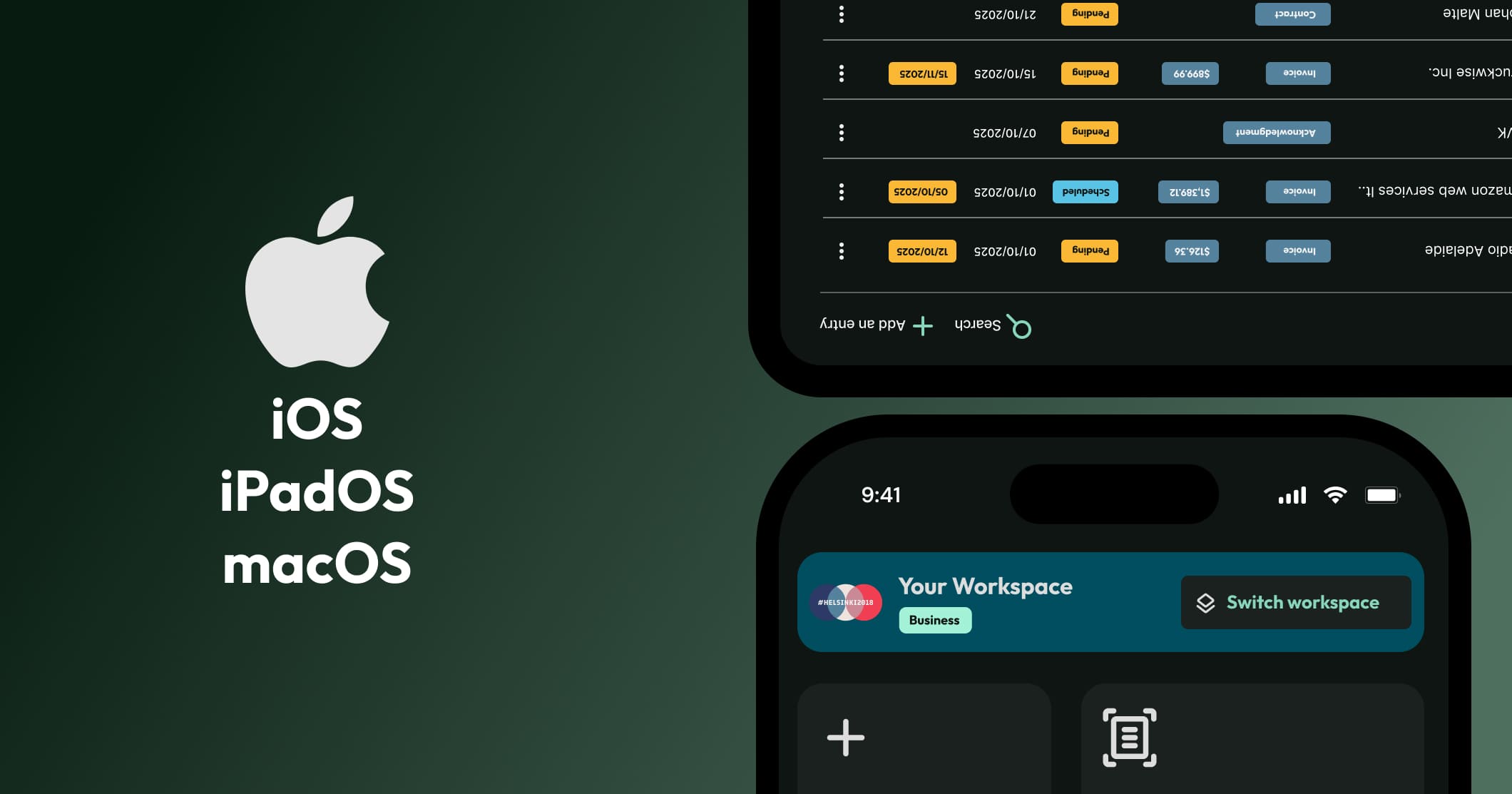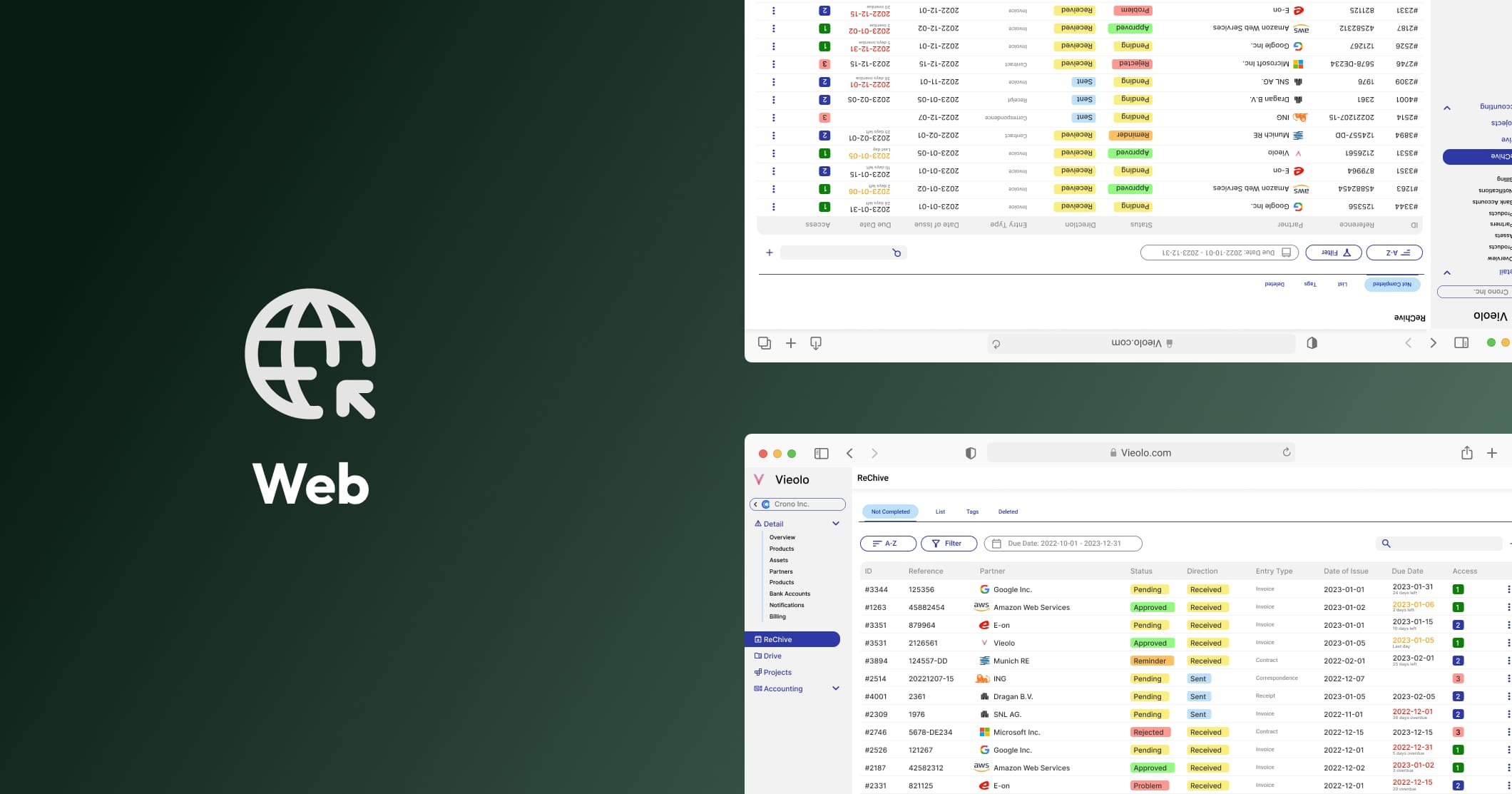What is a document management system for businesses?
Explaining the problems that a document management system solves and the requirements for a modern DMS
Documents are at the heart of every business operation. Whether it's a contract, an invoice, a legal agreement, or a recruitment form, every action in a business leaves a paper (or digital) trail. How a business manages those documents directly impacts its efficiency, compliance, and ability to make informed decisions.
In this article, we'll explain what a document management system is, why it matters for businesses, and what problems it solves, especially in today's mostly digital world.
Why document management still matters
For as long as businesses have existed, documents have served as the formal record of transactions, decisions, and plans. In the past, companies dedicated entire archive departments to manage rooms filled with racks, cabinets, and folders. In fact, proper storage and categorization weren't just about operational tidiness, they were often a legal requirement.
For example:
- In Germany, businesses must retain legal and financial records for 10 years
- In the Netherlands, it's 7 years
These regulations remain in effect today, even as paper has largely given way to digital files.
The shift to digital documents
While digital documents are far easier to store and share than physical papers, they introduced new problems.
Files can be lost in a disorganized inbox, buried in unstructured folders on a computer, or deleted by accident. Many businesses today (especially small and growing ones) rely on a patchwork of:
- Email inboxes
- Cloud storage platforms like Google Drive or Dropbox
- Local computers and mobile devices
This setup often feels convenient at first, but over time it leads to frustrating issues.
Why basic storage isn't enough for business documents
It's understandable that document management isn't always a top priority. It doesn't directly generate revenue. However, neglecting it can cause hidden costs in lost time, missed deadlines, and compliance risks.
Here are a few problems that arise without a proper document management system:
1. Files get lost or displaced
Even with cloud storage, unless you have a structured system in place, files get buried or misplaced. A single wrongly named or misplaced file can take hours to locate, if it's not gone for good.
2. Searching is frustrating
When you need to find a document, you usually remember it by context: the sender, the date, or the project it was about. Unfortunately, standard storage systems rely on folder names and file names, and if those aren't precise, you're stuck hunting.
3. No context or categorization
A basic storage platform makes no distinction between an invoice, a contract, or a legal notice. Yet, each of these requires different handling, deadlines, and next steps.
4. No integrations with business operations
Your documents don't exist in isolation. An invoice relates to your accounting. A signed contract affects your project timelines. Basic storage lacks the ability to connect documents to the rest of your business tools and workflows.
5. Limited privacy controls and activity logs
Without clear permissions and activity logs, it's difficult to control who has access to sensitive documents or to track who's viewed, edited, or downloaded a file.
What is a Document Management System?
A document management system (DMS) is a platform designed to address these challenges. It acts as a central hub for storing, managing, and organizing documents, offering far more than just file storage.
A modern DMS simulates the role of a traditional archive department with a cloud-based solution that provides integration with your business operations.
Key features of a modern Document Management System
Here's what you should expect from a capable, modern document management solution:
- Document Metadata and Context
- Handling and Workflow Tools
- Integrations with Other Business Functions
- Access Control and Audit Logs
Beyond storing a file, a DMS captures important information like sender, recipient, document type, reference numbers, and due dates.
Many documents require follow-up actions: signatures, payments, or approvals. A good DMS lets you record actions, set reminders, and manage workflows collaboratively with your team.
Whether it's sharing invoices with your accountant or linking contracts to your project management tool, a DMS should integrate seamlessly with other parts of your business.
Protect sensitive information with detailed permission systems and track document activity with logs for security and accountability.
Where ReChive fits in
No solution is perfect, and no solution fits every business and workflow. ReChive is no exception, and I'm not trying to market it as the go-to solution for every company. However, we designed ReChive to be a valuable tool for many businesses.
ReChive is a communication-based document management system. It allows you to save documents based on your communications with other entities, which mirrors the mental framework most of us use to categorize information.
ReChive gives you the ability to save detailed information about a document, not just upload a single PDF file. This information is tailored to the document type, and ReChive then helps you manage your documents and any further actions required based on that type.
With ReChive, you can keep track of your documents, identify those requiring further action, those with issues, or those with pending payments. You'll be notified when a document's due date approaches, and you can even set custom reminders for specific dates.
ReChive is also a collaborative tool, enabling you and your team to work together seamlessly. To protect your privacy and security, an elaborate permission system allows you to grant or revoke team members' access to specific actions.
Finally, ReChive provides you with tools to integrate your documents with the rest of your operations.
If ReChive sounds like a tool you need, you can sign up for free and give it a try!



